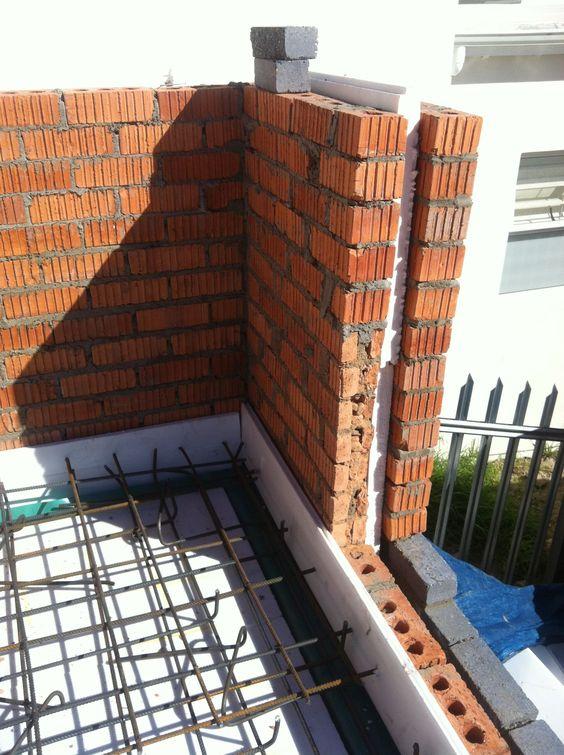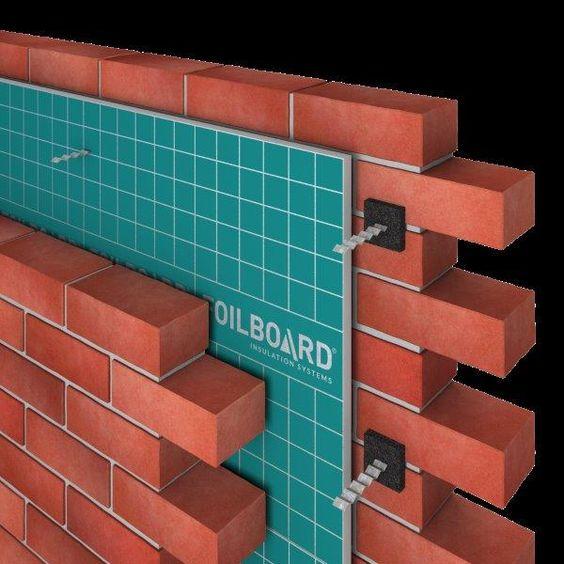



Table of Contents
- Introduction
- What is a Cavity Wall?
- Key Features of Cavity Walls
- How do cavity walls improve a home's energy efficiency
- Construction of Cavity Walls
- Special Considerations
- Advantages of Cavity Walls
- Disadvantages of Cavity Walls
- Applications of Cavity Walls
- Conclusion
- Faq's
Introduction
Cavity walls are an important feature in modern building design, especially in areas with changing weather conditions. These walls consist of two layers of masonry with a gap in between, which offers several advantages. Not only do they enhance the visual appeal of homes, but they also improve energy efficiency by keeping indoor temperatures stable. This design helps manage moisture, reducing the risk of dampness and mold, which can lead to health issues and structural damage.
Many homeowners choose cavity walls because they provide better insulation compared to solid walls. This means homes stay warmer in winter and cooler in summer, leading to lower energy bills. Additionally, the air gap acts as a barrier against rainwater, preventing it from entering the home. Overall, cavity walls contribute to a more comfortable living environment while ensuring the durability and longevity of the building. In this article, we will explore how cavity walls are constructed, their benefits and drawbacks, and where they are commonly used.
What is a Cavity Wall?
A cavity wall consists of two parallel walls (leaves) separated by a hollow space or cavity. The outer layer, known as the external leaf, is typically made from bricks or stone, while the inner layer, referred to as the internal leaf, is often constructed from concrete blocks or bricks. This design creates an air gap that serves multiple purposes, including insulation and moisture control.
 Cavity Walls For Insulation
Cavity Walls For Insulation
Key Features of Cavity Walls
Leaves: The two distinct walls (external and internal) provide structural integrity and thermal performance.
Cavity Width: The width of the cavity generally ranges from 4 to 10 cm (1.5 to 4 inches), which is critical for effective insulation and drainage.
Wall Ties: These metal connectors link the two leaves together, ensuring stability while allowing for independent movement.
Damp Proof Course (DPC): A barrier installed at the base of the wall to prevent moisture from rising through capillary action.
How do cavity walls improve a home's energy efficiency
Cavity walls significantly enhance a home's energy efficiency through several key mechanisms.
Here's how they work and the benefits they provide:
Heat Retention
Cavity walls consist of two layers of masonry with a gap in between. This gap can be filled with insulating materials, such as polystyrene beads or mineral wool, which effectively trap air. This trapped air acts as an insulator, preventing heat from escaping during colder months and keeping the home cooler in warmer months. Studies show that insulating cavity walls can reduce heat loss by up to 35%, leading to substantial savings on energy bills14.
Temperature Regulation
By minimising heat transfer, cavity wall insulation helps maintain a consistent indoor temperature. This means that your heating system doesn't have to work as hard to keep your home warm, which not only reduces energy consumption but also enhances comfort by eliminating cold drafts and hot spots23. Homeowners often report a more stable and comfortable living environment year-round.
Cost Savings
As a direct result of improved insulation, homeowners can see significant reductions in their energy bills. For instance, average savings can range from £165 to £300 annually, depending on the size of the home and other factors45. Over time, the initial investment in cavity wall insulation can be recouped within just a few years through these savings.
Environmental Impact
Cavity wall insulation is also beneficial for the environment. By lowering energy consumption, it contributes to a reduction in carbon emissions estimated at around 1,100 kg of CO2 per year for an average homes. This aligns with global efforts to combat climate change and promotes more sustainable living practices.
Noise Reduction
In addition to thermal benefits, cavity walls also help in reducing external noise. The insulating materials used can dampen sound transmission, making homes quieter and more peaceful environments36. This is particularly advantageous for homes located in busy urban areas.
Long-Term Benefits
Cavity wall insulation typically has a long lifespan, often backed by warranties of up to 25 years. This durability ensures that homeowners continue to reap the benefits of energy savings and comfort for many years after installation.
Construction of Cavity Walls
 Pinterest
Pinterest
General Construction Process
The construction of cavity walls involves several meticulous steps:
Foundation Preparation: A solid concrete footing is laid to support the weight of both leaves. The footing should be wider than the wall to provide stability.
Laying Bricks: Both leaves are constructed simultaneously using standard masonry techniques. The external leaf is often built with aesthetically pleasing materials like facing bricks.
Incorporating Wall Ties: Wall ties are installed at specified intervals (typically every 900 mm horizontally and 450 mm vertically) to connect the leaves securely. These ties must be made from corrosion-resistant materials to ensure longevity.
Creating Weep Holes: Weep holes are strategically placed at regular intervals (usually every 600 mm) near the bottom of the external leaf to allow any moisture that enters the cavity to drain out effectively.
Installing Damp Proof Course (DPC): A DPC is placed at the base of both leaves to prevent moisture from rising through the wall structure.
Insulation Installation: Insulation materials such as mineral wool or rigid foam boards can be placed within the cavity to enhance thermal performance.
Special Considerations
Cavity Depth: The depth of the cavity should be sufficient to allow for effective insulation without compromising structural integrity.
Ventilation: Proper ventilation must be considered during construction to prevent condensation within the cavity.
Moisture Management: Care must be taken during construction to avoid filling the cavity with mortar or debris, which could compromise its insulating properties.
Advantages of Cavity Walls
Cavity walls offer numerous advantages over traditional solid walls:
Thermal Insulation: The air gap between the leaves acts as an insulator, significantly reducing heat transfer and enhancing energy efficiency. This can lead to lower heating and cooling costs potentially up to 35% savings on energy bills.
Moisture Control: Cavity walls are designed to prevent rainwater penetration into the inner leaf, reducing risks associated with dampness and mold growth. The weep holes facilitate drainage and keep the cavity dry.
Sound Insulation: The design provides better sound insulation compared to solid walls, making them ideal for residential homes and commercial buildings where noise reduction is essential.
Cost-Effectiveness: While initial construction costs may be slightly higher due to additional materials and labor, long-term savings on energy bills and maintenance make cavity walls a cost-effective choice over time.
Flexibility in Design: Cavity walls allow for various construction materials and methods, facilitating creative architectural designs that can adapt to different environments and aesthetics.
Fire Resistance: When properly constructed with non-combustible materials, cavity walls can enhance fire resistance compared to traditional solid walls.
Disadvantages of Cavity Walls
Despite their many advantages, cavity walls also come with certain challenges:
Potential for Condensation: If not properly insulated or ventilated, cavity walls can trap moisture within the air gap, leading to condensation issues that may promote mold growth.
Installation Complexity: Proper installation requires skilled laborers who understand how to maintain insulation effectiveness while ensuring structural integrity.
Maintenance Needs: Regular inspections are necessary to maintain insulation integrity and prevent water ingress problems; neglecting these can lead to costly repairs down the line.
Cost Variability: While they can be cost-effective in terms of energy savings, initial construction costs may be higher than solid wall systems due to additional materials and labor requirements.
Limited Load-Bearing Capacity: Cavity walls may not be suitable for all types of structures, particularly those requiring significant load-bearing capabilities without additional support.
Applications of Cavity Walls
Cavity walls are widely utilised across various types of buildings due to their versatility:
Residential Buildings
Commonly used in homes for improved energy efficiency and comfort.
Ideal for climates with significant temperature fluctuations as they help maintain indoor temperatures.
Commercial Structures
Frequently employed in office buildings where sound insulation and temperature control are critical.
Used in retail spaces where aesthetic appeal combined with functionality is essential.
Industrial Facilities
Employed in warehouses and factories for moisture control and thermal regulation.
Suitable for manufacturing plants where environmental conditions need careful management.
Multi-Story Buildings
Often used in high-rise constructions due to their lightweight nature compared to solid masonry.
Provides flexibility in design while maintaining structural integrity across multiple floors.
Conclusion
Cavity walls represent a significant advancement in building technology, offering enhanced insulation, moisture control, soundproofing capabilities, and structural stability. Their design allows for flexibility in construction while providing economic benefits over traditional solid wall systems. However, careful attention must be paid during installation and maintenance processes to maximise their effectiveness and longevity across various applications.
By understanding both their advantages and potential drawbacks, builders and homeowners can make informed decisions about incorporating cavity walls into their projects ultimately leading to more sustainable, efficient, and comfortable living environments.
explore further
Latest from Home Buying Tips
More from Recommendations
Resources
Dwello, for every home buyer, is a way to go from 'I feel' to 'I know', at no extra cost.




